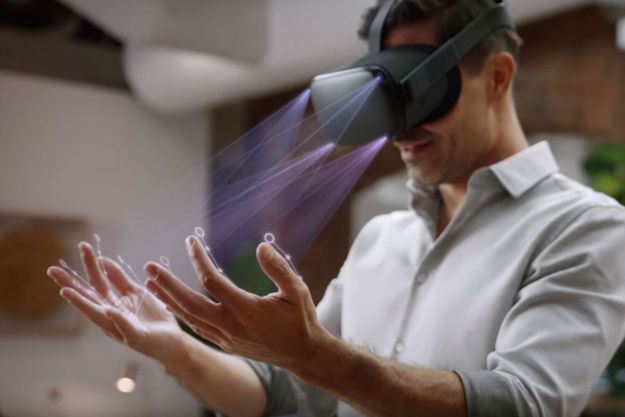“My team and I decided we wanted hands-on experience developing a virtual reality game in Unity so we decided to make a virtual reality rock climbing game,” lead designer Sanjana Galgalikar told Digital Trends. “We chose the rock climbing game because it was a feasible project that could be accomplished in the three weeks we had to do the project.
“We didn’t intentionally make a game to treat a phobia; we just wanted experience developing and designing a fun game in VR. During user testing, we realized that this game had potential to be used in helping those with a fear of heights conquer their fear, without requiring them to face it physically.”
As you can see from watching the video above, even without the added verisimilitude of a VR headset, the effect is pretty dizzying. It may look more like a piece of cubist art than a realistic landscape, but the effect is surprisingly realistic.

The game consists of three levels for the user to play through. The first level requires users to climb from one block to the next, the second involves different elevations and mountains to scale, and the third involves swinging techniques that have to be performed correctly for the user to climb to the top of the climbing wall. Controls are carried out using an HTC Vive remote control, with the controller’s trigger letting users pick up objects or grip onto rocks.
“As of now, we don’t plan on further developing the project,” Galgalikar continued. “But several of the team members including myself have a newfound interest in pursuing research and career opportunities in AR/VR after working on this project.”
While virtual reality is still predominantly considered a storytelling medium, there are some interesting examples of it being used to help treat conditions that require prolonged exposure therapy, in which patients can benefit from being given the chance to experience a particularly traumatic event in a controlled manner. In other words, should Galgalikar and her team ever return to this project, it could turn out to be something pretty interesting.
Oh, and for the record, if they do expand on it they should totally call their vertiginous virtual reality project “VR-tigo.”
Editors' Recommendations
- HTC aims to turn your carpool into a VR roller coaster
- Meta believes VR haptic gloves could unlock the future of the metaverse
- HTC’s leaked Vive Flow headset might offer portable VR
- How to watch HTC’s ViveCon today, the ‘most important VR event of the year’
- Two new ‘game-changing’ VR headsets could arrive at HTC’s ViveCon next week


